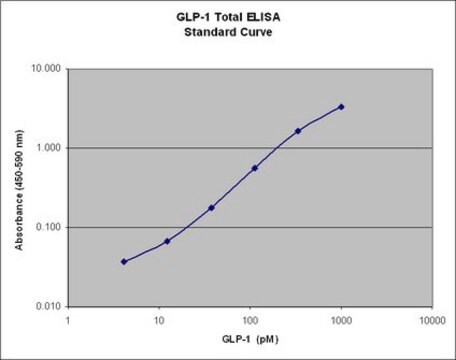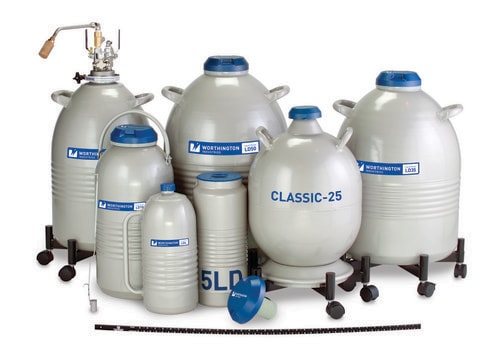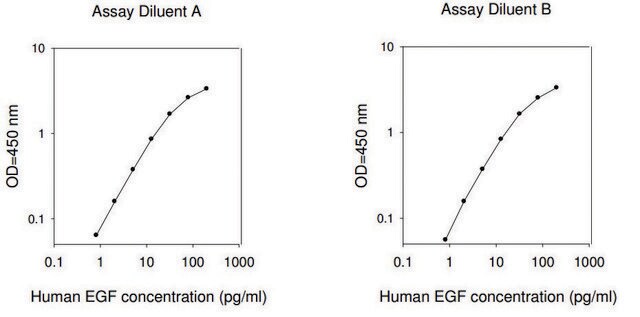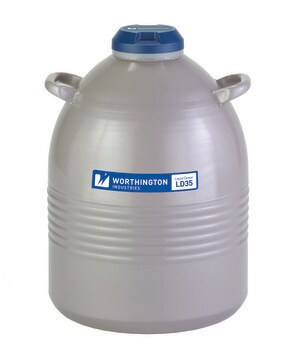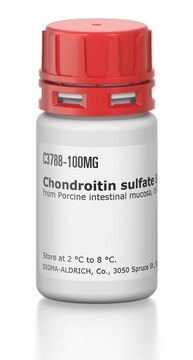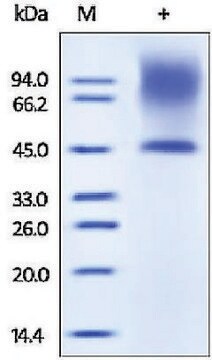RAB0140
Human Decorin ELISA Kit
for serum, plasma, cell culture supernatant and urine
Synonym(s):
Decorin
Sign Into View Organizational & Contract Pricing
All Photos(2)
About This Item
UNSPSC Code:
41116158
NACRES:
NA.32
Recommended Products
species reactivity
human
packaging
kit of 96 wells (12 strips x 8 wells)
technique(s)
ELISA: suitable
capture ELISA: suitable
input
sample type cell culture supernatant(s)
sample type urine
sample type serum
sample type plasma
assay range
inter-assay cv: <12%
intra-assay cv: <10%
sensitivity: 1.5 pg/mL
standard curve range: 0.96-700 pg/mL
detection method
colorimetric
shipped in
wet ice
storage temp.
−20°C
Gene Information
human ... DCN(1634)
General description
Decorin comprises dermatan sulfate or a chondroitin sulfate chain. It belongs to the small leucine-rich proteoglycan (SLRP) gene family and is expressed majorly in the myofibroblasts and fibroblasts.
The Human Decorin ELISA (Enzyme-Linked Immunosorbent Assay) kit is an in vitro enzyme-linked immunosorbent assay for the quantitative measurement of human Decorin in serum, plasma, cell culture supernatants and urine.
Immunogen
Recombinant Human Decorin
Application
For research use only. Not for use in diagnostic procedures.
Please refer to the attached General ELISA KIT Procedure (sandwich, competitive & Indirect ELISA)
Please refer to the attached General ELISA KIT Procedure (sandwich, competitive & Indirect ELISA)
Human Decorin ELISA Kit has been used in sandwich enzyme-linked immunosorbent assay (ELISA) of mice serum. It has also been used in the ELISA of plasma samples and cerebrospinal fluid (CSF) of glioma patients.
Biochem/physiol Actions
Decorin is involved in a wide variety of biological processes including cell differentiation, growth and muscle development. It also takes part in wound healing, angiogenesis and regulates autophagy and inflammation. Decorin interacts with matrix proteins and inhibits tumor migration and growth.
Other Notes
A sample Certificate of Analysis is available for this product.
Please type the word sample in the text box provided for lot number.
Please type the word sample in the text box provided for lot number.
Signal Word
Warning
Hazard Statements
Precautionary Statements
Hazard Classifications
Met. Corr. 1
Storage Class Code
8A - Combustible corrosive hazardous materials
Choose from one of the most recent versions:
Already Own This Product?
Find documentation for the products that you have recently purchased in the Document Library.
Mohammad F Siddiqui et al.
American journal of obstetrics and gynecology, 215(3), 361-361 (2016-03-24)
Decorin, a leucine-rich proteoglycan that is produced by decidual cells, limits invasion and endovascular differentiation of extravillous trophoblast cells during early placentation by binding to multiple tyrosine kinase receptors, in particular, vascular endothelial growth factor receptor-2. Because many studies have
Andrea Reszegi et al.
Frontiers in oncology, 10, 645-645 (2020-06-02)
Hepatocellular carcinoma (HCC) represents one of the most frequent type of primary liver cancers. Decorin, a small leucine-rich proteoglycan of the extracellular matrix, represents a powerful tumor cell growth and migration inhibitor by hindering receptor tyrosine kinases and inducing p21WAF1/CIP1.
Ting Yao et al.
FEBS open bio, 6(7), 707-719 (2016-07-12)
Decorin (DCN) is a major member of the small leucine-rich proteoglycan (SLRP) family that is critically involved in tumorigenesis and the development of metastasis of cancers, including glioma. Overexpression of DCN was indicated to suppress glioma cell growth. However, the
Zhenhong Guo et al.
Proceedings of the National Academy of Sciences of the United States of America, 111(39), 14199-14204 (2014-09-17)
The reciprocal activation of dendritic cells (DCs) and natural killer cells (NKs) plays a key role in both innate and adaptive immunity. The effect of aging on this cross-talk, a critical step in virus disease control and tumor immunology, has
Sergio Occhipinti et al.
Clinical cancer research : an official journal of the American Association for Cancer Research, 20(11), 2910-2921 (2014-03-29)
Despite the great success of HER2 vaccine strategies in animal models, effective clinical results have not yet been obtained. We studied the feasibility of using DNA coding for chimeric rat/human HER2 as a tool to break the unresponsiveness of T
Our team of scientists has experience in all areas of research including Life Science, Material Science, Chemical Synthesis, Chromatography, Analytical and many others.
Contact Technical Service